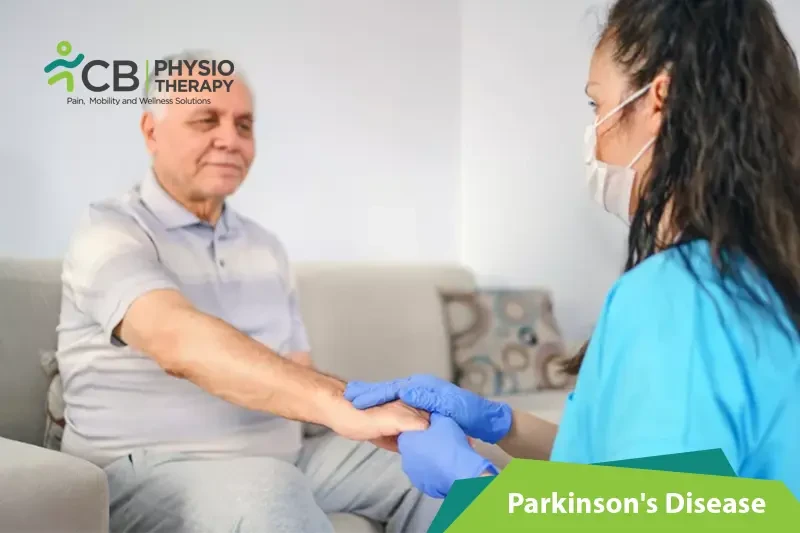
Parkinson’s disease or paralysis agitans is a degenerative disorder of the central nervous system. The motor symptoms of Parkinson’s disease occur due to the death of dopamine-generating cells in the substantia nigra (a region in the midbrain). The main motor symptoms experienced by the patient are collectively called “parkinsonian syndrome”.
Parkinson’s disease affects movement, producing motor symptoms. Non-motor symptoms can include autonomic dysfunction, problems in mood, cognition, behavior, and sensory disturbances. Other symptoms include:
The causes of Parkinson’s disease are usually non-known. Though some cases can be attributed to:
Pathology:
Parkinson’s disease affects the dopamine cells in the substantia nigra compacta. In idiopathic and genetic PD, cell loss occurs in association with the formation of Intraneuronal Lewy inclusion bodies.
Physical examination:
The examiner evaluates the patient's motor and neurological function like muscle tone, coordination, and balance, walking and gait, hand tasks agility of legs and arms, etc., and also checks the medical history.
Magnetic resonance imaging (MRI) and Computed tomography (CT):
CT and MRI scans of people with Parkinson’s disease usually appear normal but these techniques are useful to rule out other diseases that can cause similar symptoms such as vascular pathology, basal ganglia tumors, and hydrocephalus.
Blood tests:
Blood tests can help to rule out causes for the symptoms such as liver damage, and abnormal thyroid hormone levels.
Medication: Levodopa, Dopamine agonists: bromocriptine, pergolide, apomorphine, etc, MAO-B inhibitors like selegiline and rasagiline, amantadine, and anticholinergics.
Surgery:
Surgery for Parkinson’s disease can be divided into two main groups: lesional and deep brain stimulation (DBS). Though DBS is the most commonly used surgical treatment.
Cryotherapy helps to reduce localized and systemic inflammation which is found to be effective inpatient suffering from PD.
Thermotherapy produces body heating that improves muscle performance and helps to achieve full movement.
Range of motion exercises:
Range of motion exercises helps to maintain health and well-being in Parkinson’s by increasing strength, endurance, flexibility, functional practice, and balance.
Aerobic exercise:
Aerobic exercises are found to slow down motor skill degeneration and depression.
Stretching and flexibility:
Parkinson’s disease patients usually develop tight flexors, hamstring muscles, and calf muscles. To treat this stiffness stretching at frequent intervals is done throughout the day.
Strength training:
Strengthening exercises include exercises that are done against an external resistance such as cycle ergometer, weight machines, therapeutic putty, elastic and, weight cuffs.
Dual-task training:
Dual-task training with motor cognitive dual-task training helps improve dual-task ability, and also improves cognition, balance, and gait e.g talking while walking, which is commonly difficult in patients with Parkinson’s.
Movement Strategy Training:
Movement strategy training includes physical or attentional cues and combined strategies that help to train improvements in movement. Movement strategies take the form of cued functional and dual-task training. Compensatory strategy training uses self-instruction, external cues, and attention such as:
Visual cueing:
It uses a focus point to step over and initiate gait like strips of tape on the floor are used to initiate or continue walking through areas that cause freezing or slowing.
Auditory cueing:
Auditory cueing involves continuing 1-2-3 to initiate walking and stepping to the beat of specific music at a specified cadence to continue the rhythm of walking.
Attention:
Attention cueing is initiated by making the patient think about taking a big step and making a wider arc turn. This is applicable in case of correcting trick movements like walking with stuff hip or hip hiking.
Proprioceptive cueing:
Proprioceptive cueing involves rocking from side to side, ready to initiate a step taking one step backward as a cue ready to then walk forwards.
The patient family is advised to install shower or tub grab-bars, nonslip tape on floors, and elevated toilet seats with handles. There should be adequate lighting in the house, especially at night, light-sensitive night lights or lamps on a timer may be helpful. Most patients with Parkinson's disease can continue to drive as long as the motor symptoms remain mild.
Select your City to find & connect with our experts regarding Physiotherapy for Parkinson's Disease